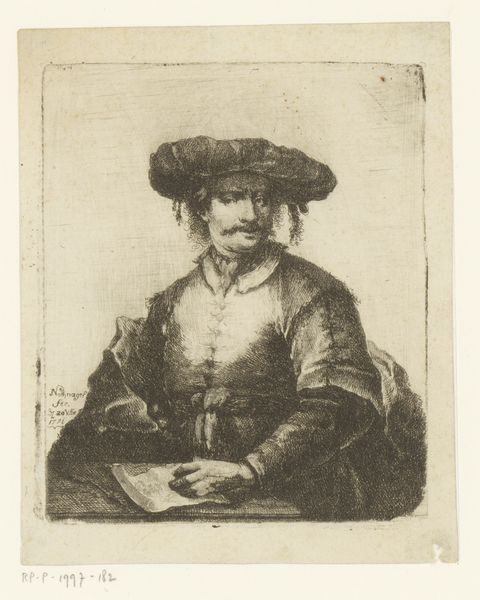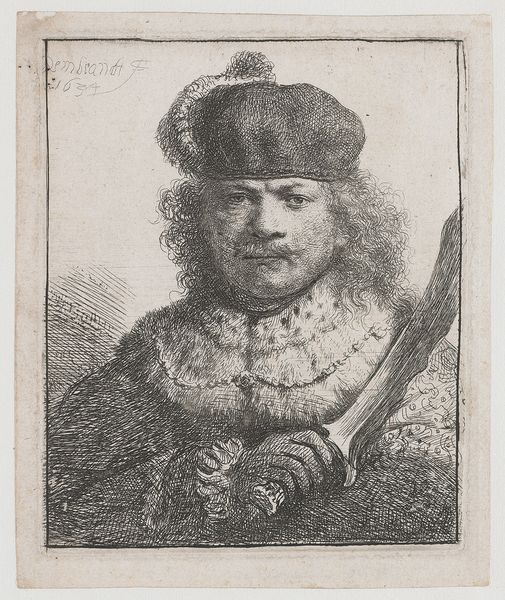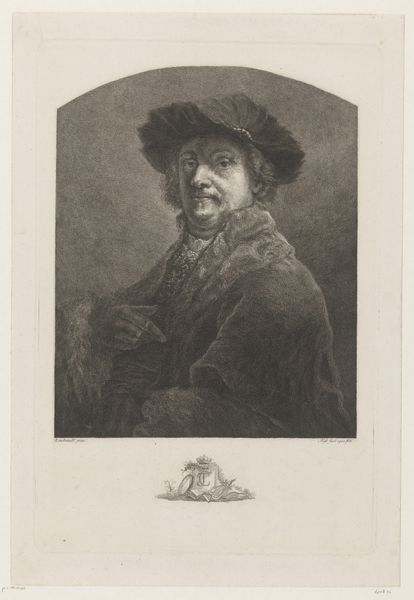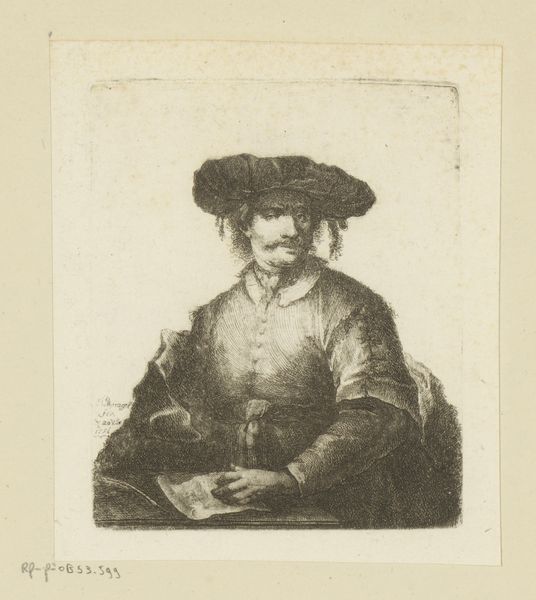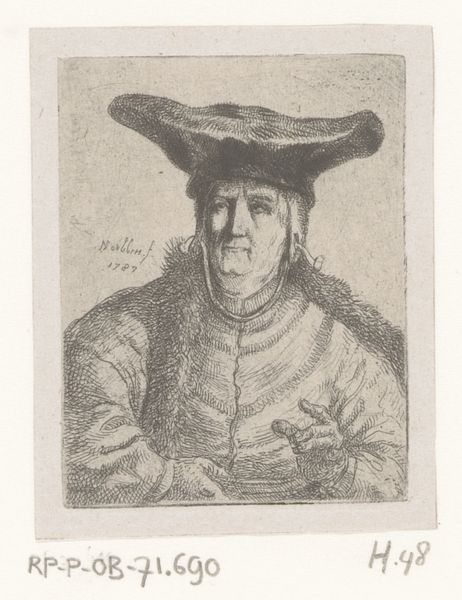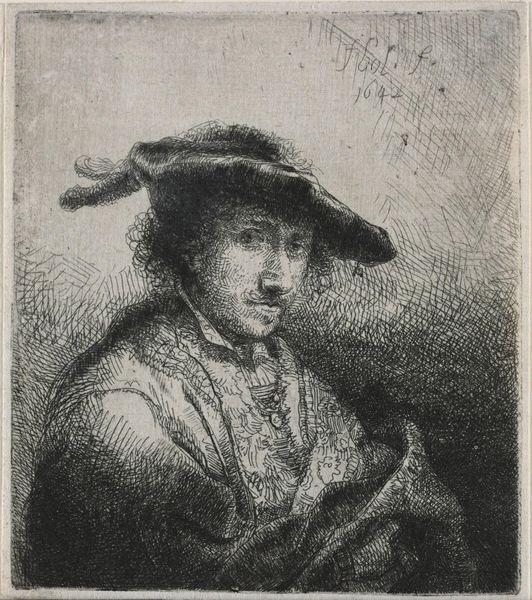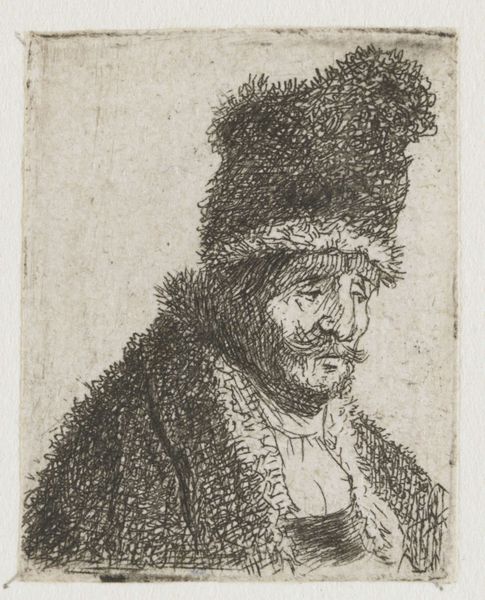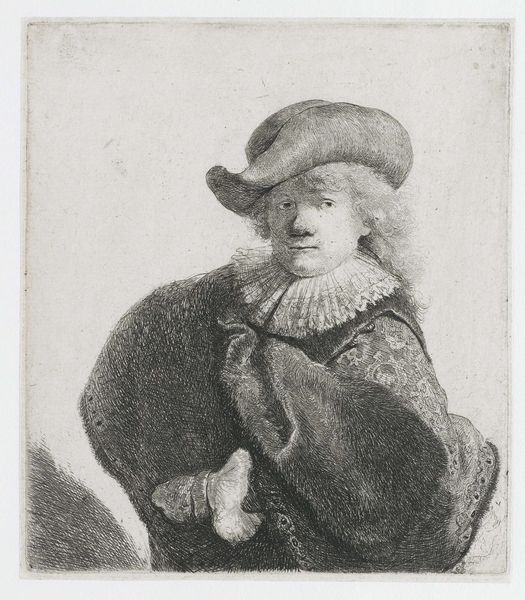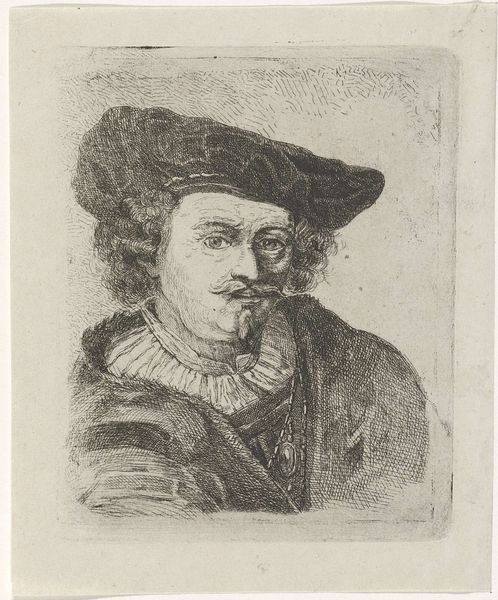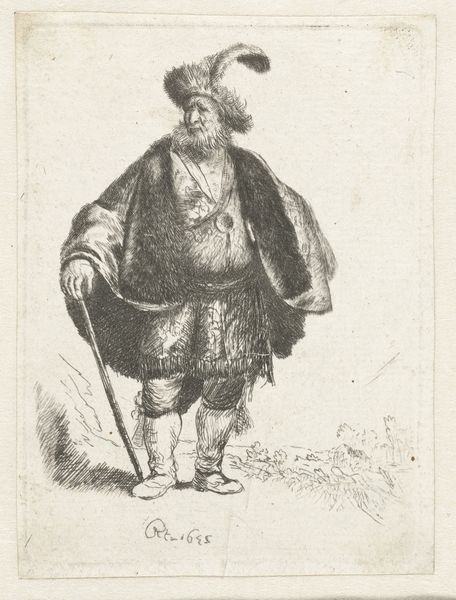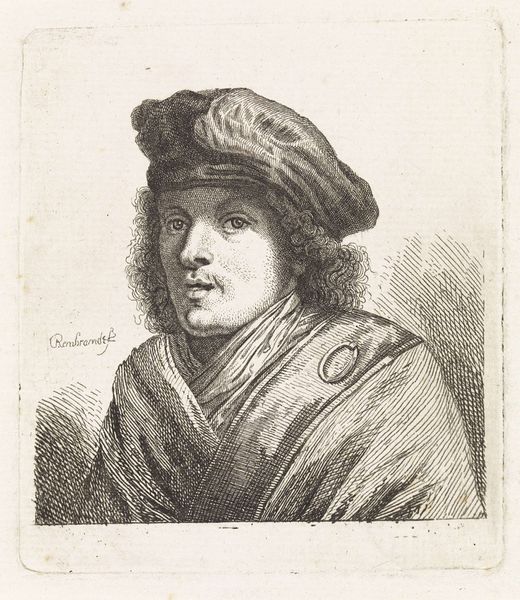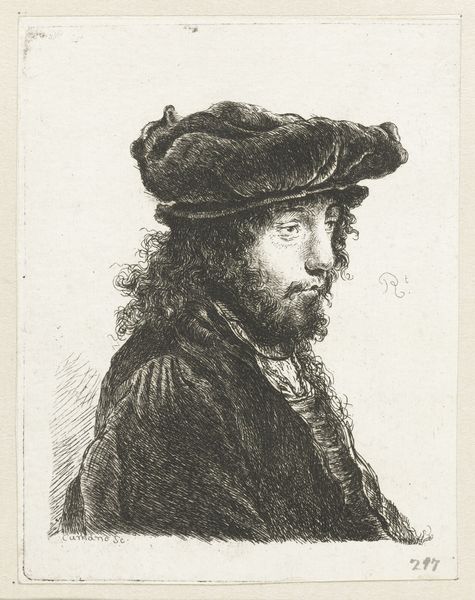
Dimensions: height 65 mm, width 43 mm
Copyright: Rijks Museum: Open Domain
Editor: We're looking at "Man met baret" (Man with Beret), an etching made in 1771 by Johann Andreas Benjamin Nothnagel. It's quite small, almost miniature, but the detail is incredible! I find the contrasting light and shadow particularly striking. What stands out to you when you examine the composition? Curator: It's fascinating how Nothnagel uses line to create depth and texture. Notice how the density of lines varies to create areas of shadow, particularly around the subject's face and within the folds of the beret. This modulation is a sophisticated compositional tool. Do you see how the artist uses a series of small hatches to create tonal variation in the man's face? Editor: Yes, it almost gives the face a three-dimensional quality, even in such a small, two-dimensional print. The beret seems to be the main focus with more dense cross-hatching that directs the eyes. Is this intentional, directing focus onto the beret and away from the man himself? Curator: Precisely. It's an interesting question: why prioritize the beret over the individual? Is the hat's ornamentation a symbol of something? This etching exemplifies a structured artistic vision. Also, how would you define its geometrical disposition as this work evokes a semiotic appreciation of forms? Editor: I guess I hadn't really thought about it in terms of semiotics, it felt like a baroque rendering. Maybe this piece reveals how even portraits are shaped by artistic intention, like the clothing being of far more significance than initially thought. Curator: Precisely. Reflecting on Nothnagel's piece through this Formalist lens clarifies the artist's choices of composition to elevate his themes with expert skill. Editor: Thank you, your focus has shed new light on understanding visual intention that has been missed.
Comments
No comments
Be the first to comment and join the conversation on the ultimate creative platform.
